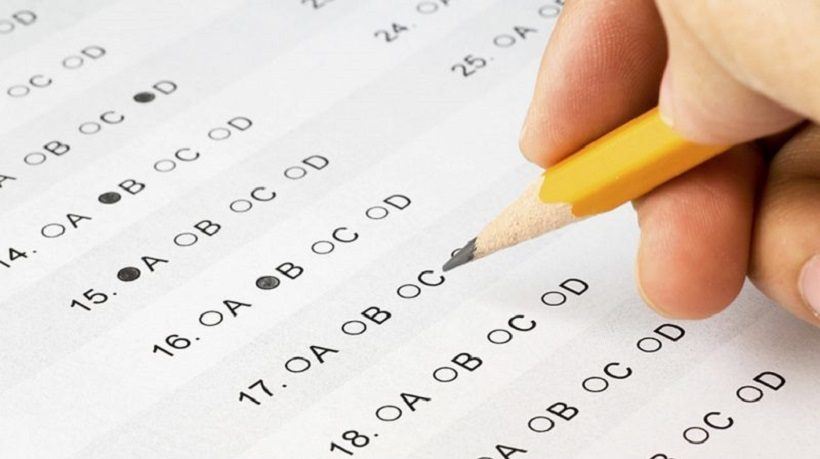5 Useful Formative Assessment Tools
Formative assessment is an important part of online and blended learning (okay, all learning). The internet is full of all sorts of assessment tools—from the do-it-yourself applications of Hot Potato (Yes, it’s still around!) to common assessment tools used for blended learning—Poll Everywhere, Quizlet, Kahoot, Socrative, Schoology, and Go Formative. In this article, I share my 5 favorite (of the moment), formative assessment tools, why I like them and how they complement and support formative assessment. These are listed in no particular order.
1. PeerGrade
Peer assessment, when done well, can promote student autonomy and responsibility and help students dive deep into the learning. Until lately, I hadn’t come upon too many peer assessment tools that were either free or useful for my purposes. But then I happened on PeerGrade, a peer assessment tool created by a team at the Technical University of Denmark. You create assignments in PeerGrade, develop a scoring guide or rubric, and PeerGrade randomly assigns students as peer assessors and thus allows them to provide one another with feedback. Learners can give feedback on the feedback they’ve received.
I’m currently using PeerGrade in an online course I am teaching with 60 higher education instructors in Southeast Asia. What I love about PeerGrade is the simple user interface, its focus on good assessment and feedback (and its many resources to support this), its twitch-speed tech support, and the fact that it was designed by educators for educators. Its biggest weakness, that I see, is that it does really well with individual peer assessment. With team assessment, not so much (though there are workarounds). But the bottom line is this: Peer assessment only works if learners understand the process. The tool is secondary.
2. Rubistar
Rubrics are useful for assessment measures that are more qualitative, open-ended and interpretive, such as essays, plays, book reports, web sites, etc. They can help to align standards with learning outcomes, make standards objective and transparent, and provide students with a defined series of milestones that, if they follow them, should result in success.
A holistic rubric requires the teacher to score student work as a whole, without judging the component parts separately. Holistic rubrics are often used for summative assessment.
An analytical rubric scores separate, individual parts of the product or performance first, then adds the individual scores to obtain a total score. We use analytic rubrics for open-ended tasks in which there may be more than one acceptable response and where there is room for student creativity and instructor interpretation of the quality of student work.
It’s easy to create an analytical rubric. It’s hard to create a really good analytical. But though there are a number of rubric-generators online, here are two I still like. The first is Rubistar, which may be older than some of the readers of this article. Yes, its interface is sooooo Windows 3.5 but Rubistar is a very simple rubric generator that lets a teacher create a rubric for any number of content areas with any number of criteria. It also has tons of rubrics online that teachers can peruse and use. Its simplicity is both a virtue and a vice. Teachers can really quickly generate a rubric, but they are often too simple. But they can then download and modify rubrics and make them better.
Annenberg Learner also has a rubric generator which I prefer to many more popular make-your-own rubric sites. While it is more comprehensive than Rubsitar, it’s also more time-consuming to create.
3. (Tie) Google Sheets Extension And Orange Slice
Many teachers use analytical rubrics as formative assessment tools so that students can analyze the various components of a project or work and then focus on improving their work in those areas. The problem is that completing rubrics and giving students feedback is a pain.
Fortunately, there are two nice Google Docs add-ons that help with scoring rubrics and getting feedback to students in a timely manner.
The first is Google’s add-on for rubrics. I really like this extension (I’m using it now assessing my online learners’ work) because it lets you import email addresses, set up your rubric in a spreadsheet, quickly input scoring levels and then email grades to students (through a nice email merge template). Look here for a nice tutorial.
The second is OrangeSlice which has a teacher and student version. Orange Slice walks you through the rubric-creation process (so it belongs in Tool #2), allowing you to select pre-created categories or create your own. It then allows the teacher to simply and visually grade a student work and inputs the final score for student work. The teacher can then disseminate through Google Classroom.
4. Sli.do
You’re a teacher or a professional development provider and you are giving a lecture or a presentation. What are your students thinking? Where do they need help? What questions do they have?
Sli.do (Completely free when I started using it, now only free for three events. But still.) is an audience interaction tool. The teacher creates a closed class (an event) which students enter with a code. Participants or students can ask questions as the teacher speaks. Sli.do also supports polling.
5. …..
Tool #5 is any technology you have because assessment is not about technology. It’s about knowing what you want to know and checking for student understanding. Any technology tool--word processing software, Google Hangouts, a web quest, email--can be an excellent tool for formative (and summative) assessment. Why? Because good assessment, in particular, is not about particular technologies. It is about monitoring student learning and checking for understanding with whatever tools we have at our disposal in order to help students successfully attain learning outcomes.

